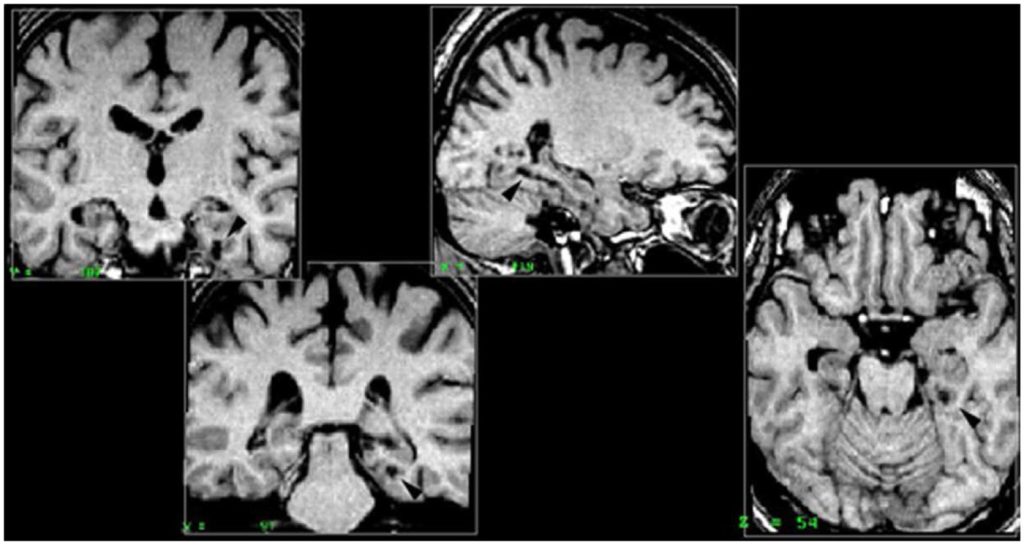Perception and Action
125
Learning Objectives
Be able to define navigation.
Be able to describe the location and function of the brain region most commonly associated with navigation.
The brain region most strongly implicated in the landmark recognition skills necessary for navigation is the parahippocampal cortex. A recent neuroimaging study found that patients who had received thermal lesions in parahippocampal regions (inferior ventral temporal regions close to the hippocampus) were less capable of remembering the configuration (relative location) of objects, but were not impaired in identifying the objects (Bohbot, 2015). This is the kind of research that implicates the parahippocampal cortex in navigation, one skill that bridges the gap between perception and action.

One of the most famous studies is a brain imaging study of London taxi drivers, which found that taxi drivers have larger PHCs than a control population (Maguire, 2006). The difficulty with interpreting the original results, of course, is that a causal relationship cannot be established—maybe people with big PHC regions are good at learning complicated road networks, or maybe learning all those twists and turns and landmarks actually makes your PHC grow. The research group followed up their initial study with a longitudinal study (following cab drivers from when they started training until they learned the streets, and comparing them against a control population. The second study was actually able to measure an increase in the size of posterior hippocampal cortex as cab drivers learned the streets (Woollett, 2011).
Here is an additional video about London taxi drivers.
Bohbot VD, Allen JJ, Dagher A, et al. Role of the parahippocampal cortex in memory for the configuration but not the identity of objects: converging evidence from patients with selective thermal lesions and fMRI. Front Hum Neurosci. 2015;9:431. Published 2015 Aug 3. doi:10.3389/fnhum.2015.00431
References:
Bohbot VD, Allen JJ, Dagher A, et al. Role of the parahippocampal cortex in memory for the configuration but not the identity of objects: converging evidence from patients with selective thermal lesions and fMRI. Front Hum Neurosci. 2015;9:431. Published 2015 Aug 3. doi:10.3389/fnhum.2015.00431
Maguire E.A., Woollett K., Spiers H.J. London taxi drivers and bus drivers: a structural MRI and neuropsychological analysis. Hippocampus. 2006;16:1091–1101.
Woollett K, Maguire EA. Acquiring “the Knowledge” of London’s layout drives structural brain changes. Curr Biol. 2011;21(24):2109-2114. doi:10.1016/j.cub.2011.11.018

